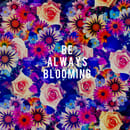I wrote an article a few months ago about my struggle with accepting my bisexuality. Since coming to terms with myself, I have begun looking for women who were like me in the media: bisexual women of color who were happy with themselves. For the most part, I’ve been unsuccessful.
Now I’ve always been adamant that you don’t have to be a mirror image of people you see in popular media; it’s unrealistic and unfair for those of us born without perfect bone structure and the ability to look angsty and beautiful at the same time. But, I recognize that we all search for parts of ourselves in the protagonists of our favorite stories. We like seeing people like us on the big and small screens, being happy and courageous. Diversity in the media allows for greater visibility for different groups that haven’t always been portrayed as the hero, but as the sidekick, the villain, or the background character. In media, where the heroes are portrayed as larger than life, queer folks are often regulated into smaller corners and even smaller closets.
For a long time, members of the LGBTQIA+ community have been completely sidelined in every story as the comic relief, as the predator, as the example of a perfectly wretched existence. Fortunately, as time progresses, there’s been more positive representation for some in the LGBTQIA+ community in TV shows and movies like in Modern Family and Love, Simon. However, almost all of these depictions have been of white and cisgendered folks. While this certainly isn’t a bad thing, it tends to erase other portions of the queer population from public consciousness. Mainstream writers, despite their best attempts, continually fail to venture far from their rigid preconceived notions about sexuality and gender identity. Instead of writing compelling and realistic stories about the true diversity of the queer community, they stick to cookie cutter romance plots that only a small portion of the population can relate to and/or see themselves in.
Back to my personal mission to find positive representation for bisexual women of color. As I mentioned earlier, I haven’t been very successful. It seems that everyone and their mother is afraid of the term “bisexual” because characters are almost never called that by name. Their sexuality is never mentioned or it’s assumed that they’re homosexual. If their character is canonically bisexual, then it’s seen as a character flaw to be fixed. This marginalization isn’t something to overcome or to serve as a way for the character to grow; rather, it’s something that is seen as a joke.
All I want is to see a happy bisexual woman of color that I can project onto. Is that too much to ask? Based on what I’ve seen, the answer seems to be a resounding yes.
I know that all of these complaints may seem petty, but representation does matter. It matters so much. I can only imagine what would’ve happened if I had seen someone who looked like me and was confident in their own skin. I never really had an example to go by in terms of how to accept myself. Granted, everyone’s experience is different, but I think it would’ve helped me to feel less trivialized, less alone. After I accepted myself I felt the need to see myself in my favorite characters if only to tell myself that I would end up like them: beautiful and happy like every other fictional character. I still crave the role model that I craved when I was younger and maybe I’ll get it eventually.



